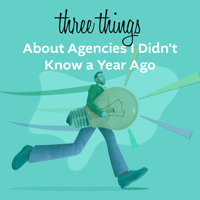Over the past 18 months, we have experienced the highest interest rates since 2000, with them...
The Risk Inside your Agency

Key People & Roles
In almost every organization their people are their most valuable asset. Inside an independent insurance agency, this is 100% the case. We operate in an industry that relies heavily on relationships, and your people are the ones that build, maintain, and grow those relationships in every facet of your agency. Whether it be with customers, partners, carriers, vendors and with members of your staff they are key to your success. In addition to the relationships they build, many people inside organizations hold key roles that are critical to the organization.
This becomes even more pronounced in organizations that are small and have limited abilities to have multiple people in similar roles. The average independent agency has a staff size of 7 employees, which does not leave a lot of opportunity for cross-over in key roles. As a result, the people that hold key roles become an area of risk for the organization. We talk a lot about succession planning for the owner of an agency, but not a lot of focus is placed on creating a plan to cover key roles within the agency should one of your employees chose to leave, become ill or retire. Here are some ways you can reduce the key role risk inside your agency.
Identify the areas of Risk
For each position inside your agency, list the core functions included in each position or role. Once you have the core functions defined, make a list of every person that is trained in each of the core functions across your entire organization. Ask yourself who is the backup for this function inside the agency? In many cases the service and sales focused roles such as CSR, account manager, and producer will have more than one person trained to perform the key functions of these roles. For accounting, administrative, and operational functions you may find that there are several areas where only one person has the access, knowledge, and skillset to perform certain functions. You now have identified your core areas of risks.
Document the Functions
For each of the core functions identified inside your agency, consider the impact that each function has on your agency and prioritize those functions that will create the most risk should you no longer have the key employee in place to perform that function. Work with your team to document detailed processes to complete each function. Ask them to include all the contact information for the resources they utilize such as technology vendors, carrier contacts, outside accountants or vendors, etc. Consolidate all these processes in one location that will serve as a reference for all of the key functions inside your agency.
Train a Backup
Once the processes are documented, identify the right person inside the agency that can serve as a backup to the primary person who is responsible for each function. Some functions will be easier to identify a backup than others as some functions may require access to sensitive information like payroll or financials. Once you have identified the appropriate backup for each function, implement a plan for them to be trained. You may need to create new login to provide the right level of access for the employee that will serve as a backup. The documented process should be used as a guide and be edited as they step through the training process. This will ensure that when they need to perform this function independently, they will have the information they need to be successful. Set goals to have all the key functions documented and cross-trained inside your agency by a certain date and set check-in meetings with the primary and backup employees to monitor and celebrate the progress.
Create Opportunities to Practice
For each of the critical functions that you have identified, documented, and created a training plan for, it is also important to identify opportunities for the employee who is being trained to practice their skills and test the processes that they have learned. Great opportunities include vacations, setting a periodic interval where they take a turn doing the function. By being intentional about practicing these functions, you will have less down time should something happen to the primary person in your agency that is responsible for these functions.
There are many benefits to cross-training key functions inside your agency besides reducing the risk for the agency. Your entire staff will benefit from having these key functions identified and backed up. There will be less delays when someone is out of the office, and you may find that it has a positive impact on your overall culture. By participating in this process, your staff will gain a greater sense of understanding of some of the different roles within the organization and may even gain a whole new appreciation for their teammates. In many cases, by going through the process of documenting these functions and training others, efficiencies and improvements are naturally identified. A second set of eyes on things that we have always done a certain way, can lead to opportunities for efficiencies. In addition, the employees that are responsible for the key functions will have a greater sense of relief when they take vacations or are away from the office knowing that they have someone there that can cover for them, when needed.



